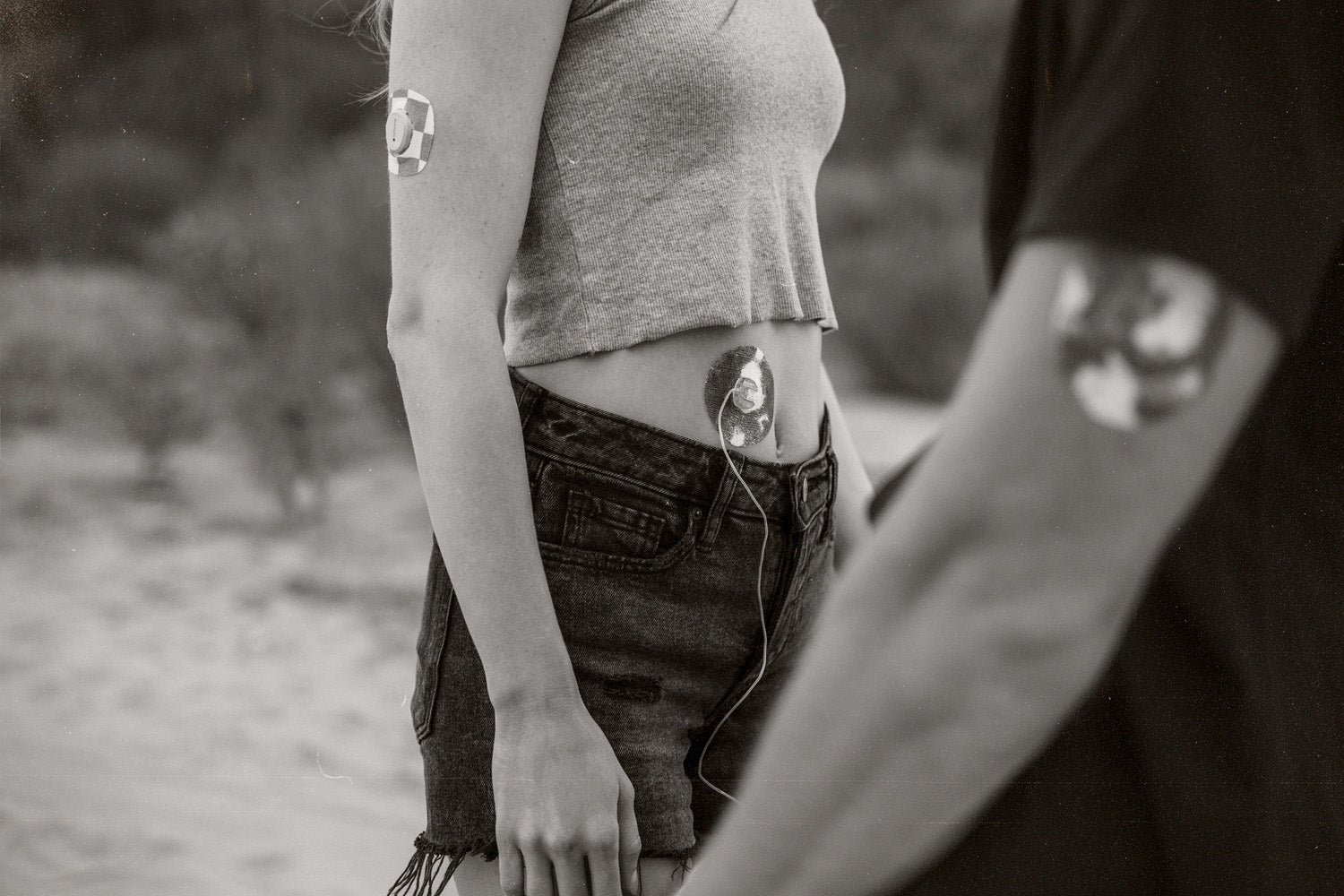
*Disclaimer: All content and information in this blog is for informational and educational purposes only. This article was medically reviewed by Amanda Ciprich, MS, RD. Last updated on 3/15/24.
Adjusting to life with type 1 diabetes can be overwhelming, but with diabetes technology evolving there are devices that can make your life a lot easier. Instead of dealing with the hassle of multiple daily finger sticks, you can utilize a continuous glucose monitoring system, like Dexcom G6, to obtain real-time glucose readings without having to prick your finger. Continue reading to learn more about the innovative features of Dexcom G6 and how it can transform your diabetes management.
What is the Dexcom G6?
Dexcom G6 is a continuous glucose monitoring system (CGMs), a device that measures interstitial glucose readings for people with diabetes. Dexcom G6 obtains a glucose reading every 5 minutes so people with diabetes can have a constant update on what their current glucose level is and where it is trending, allowing them to respond immediately to changes for more effective and informed diabetes self-management.
Key Features of Dexcom G6
Dexcom G6 has several features designed to provide accurate and convenient glucose readings for people with diabetes. Here are some of the key features of the Dexcom G6 CGM system:
- Customizable alerts: Users can set customizable high and low glucose alerts when glucose levels are outside their target range. These alerts can allow users to make more timely actions to manage their glucose levels effectively.
- Trend arrows: Dexcom G6 provides trend arrows that show the rate and direction of glucose change, allowing users to see how their glucose is trending overtime and make more informed treatment decisions.
- No fingerstick calibrations: Dexcom G6 does not require routine fingerstick calibrations. This features enhances the convenience and simplifies the glucose monitoring process.
- Compatibility with smart devices: Dexcom G6 is compatible with a range of smart devices, including smartphone and smartwatches. Users can easily access their glucose readings directly on their personal devices using the Dexcom app.
- Compatibility with automated insulin pump systems: Dexcom G6 is compatible with a vary of automated insulin pump systems (AIDs) which can streamline insulin delivery by automatically increasing or decreasing insulin rates depending on glucose levels.
- Water resistant design: Dexcom G6 has a water resistant design that allows users to shower, swim, and exercise without having to worry about their sensor falling off.
- Exceptional Accuracy: Dexcom G6 has exceptional accuracy has gained FDA approval for treatment decisions without finger sticks as long as the reading displays a number and arrow and symptoms match the reading.
How do I use my Dexcom G6?
Using Dexcom G6 involves several steps to ensure accurate and reliable continuous glucose monitoring (CGM). Here's a general guide on how to use Dexcom G6:
- Prepare the Sensor: Open the Dexcom G6 sensor package and remove the sensor applicator. Remove the adhesive backing from the sensor applicator.
- Prepare the Insertion Site: Choose a clean and dry area on your for sensor placement.
- Insert the Sensor: Position the sensor applicator over the chosen site and press the sensor applicator firmly against the skin to insert the sensor. You'll hear a click when the sensor is inserted.
- Attach the Transmitter: Remove the transmitter from its package or from previous sensor. Align the transmitter's grooves with the tabs on the sensor and press down firmly until you hear a click.
- Start the Sensor Session: If you're using a receiver device, turn it on and follow the instructions to start a new sensor session. If you're using a smartphone app, pair the transmitter with your phone and start the sensor session according to the app's instructions.
- Wait for the Warm-Up Period: The Dexcom G6 sensor requires a two-hour warm-up period before it starts providing glucose readings. During this time, the sensor will calibrate and stabilize.
- Check Glucose Readings: After the warm-up period, check the receiver device or smartphone app for glucose readings. Ensure that the readings are accurate and consistent before making any diabetes management decisions.
- Calibrate (Optional): Dexcom G6 does not require routine fingerstick calibrations for accuracy. However, you have the option to perform occasional calibrations if symptoms do not match the readings or as recommended by your healthcare provider.
- Monitor Glucose Trends: Use the trend arrows on the receiver device or smartphone app to understand how your glucose levels are changing over time.
- Replace the Sensor: Dexcom G6 sensors typically last for around 10 days. After this period, you'll need to remove the sensor and replace it with a new one. If you have issues with the adhesive staying stuck for the full 10-day wear time, consider a Dexcom G6 Adhesive Patch.
It's essential to follow the instructions provided in the Dexcom G6 User Guide and consult with your healthcare provider if you have any questions or concerns about using Dexcom G6 for managing your diabetes.
How much does Dexcom G6 cost?
The cost of the Dexcom G6 system will vary from person-to-person, depending on individual insurance coverage. GoodRx and Dexcom G6 have partnered together for self-pay users not utilizing commercial insurance. The price of a 30-day package of sensors is about $175 and a transmitter is $50.
How can I get a Dexcom G6?
You can pay for your Dexcom G6 out of pocket or run it through insurance. Start by getting a prescription from your physician. Once you've obtained a prescription, you can order your Dexcom G6 from a pharmacy, medical supplier, or directly through Dexcom's website.
Resources:
https://www.dexcom.com/en-us/g6-cgm-system
https://www.dexcom.com/en-us/partnerships/integrations-and-compatibility
https://www.goodrx.com/dexcom-g6






























